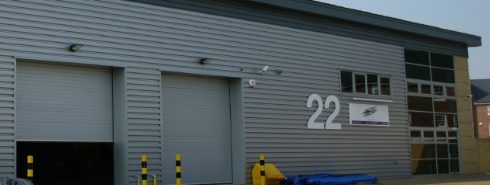
Reports of a chronic lack of large warehousing and logistics facilities in and around London could stall the South’s economic recovery in several ways
Several heavy users of the fulfilment industry in and around London report that they are struggling to find larger (100,000 ft2 and up) facilities. If this shortage becomes chronic, it could slow the rate at which foreign businesses become established in the UK dramatically, with unpleasant results for the slowly recovering economy. Many are already looking outside of London for their logistics needs, and considering space all over the Midlands.Of course, there are several ways to expand logistics in London. New, bespoke space can be built, but the fact is that the design and build option takes at least 18 months to go operational, and often more. The current range of companies looking for logistics in London expect to be fully operational within 6 months at the outside. They simply cannot afford to wait a year and a half. Real estate is not inexpensive here, either. Many developers claim to be struggling to finance new warehousing and London logistics. Simply put, so long as businesses hesitate to have new facilities built to order, the finance sector will doubt the wisdom of lending to the developers who would otherwise be willing to build speculatively. To offset the perceived risk, the interest rates are too high for the developers to accept.
So, logistic space effectively moves out of London. This will have a cascade effect on other parts of the logistics sector, including carrier prices.
Challenges to the carrier sector
Some would say the carrier sector is already struggling to meet demand. Firstly, many carriers still report a crippling shortage of skilled, experienced drivers. Many looked to increased immigration from Europe to supply the needed drivers, but they are not coming fast enough to allow carriers to expand to meet demand. Worse still, new people have not been moving into trucking quickly, and high turn-over at low levels means that the workforce is extremely top-heavy, with too many of the best skilled drivers near retirement age, and too many of the younger drivers essentially unskilled. The drivers of intermediate skill and seniority just aren’t there, and in just a few years the carrier industry will feel their lack.Secondly, many of the larger operations in the carriage sector have announced that they do not plan to increase the size of their fleets substantially in the near future. The fact that the drivers needed to get the lorries on the road just aren’t available doesn’t make expansion sound profitable, regardless of demand. Just as with building new warehousing and logistics facilities, the investors aren’t there. The financial sector isn’t convinced that this demand will exist long term, and aren’t willing to risk funding expansion cheaply.
Now, you see the real problem. If more logistics space is established relatively far from major population centres in the South, demand on existing carriage capacity will skyrocket. Most carriers are not planning on expanding or adding substantial amounts of capacity. As demand outstrips capacity, further expansion of logistics operations outside of the Greater London Area becomes inefficient and ill-advised. Perhaps the business doesn’t come to the UK at all.
One solution to this problem depends on squeezing extra capacity from existing logistics in London. Many logistics organisations are looking towards automation to fill this capacity gap. This trend has been going on for some time, but the added pressure to make 50,000 square foot facilities operate like 100,000 square foot facilities necessitates some major changes in infrastructure. As the industry is forced to do more with less, machines will replace people at an advanced rate.
Logistics in London increased automation as viable industry strategy
Logistics in London is at the forefront of using automation to increase throughput without increasing overall footprint these days. Especially in the UK, many facilities are still heavily human-centred, and the opportunity exists to adapt proven technology from more mechanised facilities in the United States and Europe.Expanding automation rather than human workforce really does save space, and makes facilities more efficient. Automation is moving into new parts of inventory control, product handling and distribution every day. A picker can do a lot more with a route-planner and a WMS than they can without one. Modern inventory control would be impossible for most facilities without scanning equipment even now. Even management of a facility’s existing human workforce is becoming more automated, as warehouse management systems handle more and more of the everyday managerial function.
Experts are telling us to expect a lot more automation solutions on the market in coming years, specifically for order fulfilment and inventory tracking. The goal of these new systems is to allow smaller, existing facilities to perform like larger ones, with increased throughput and lower error rates, but without the real estate, carbon, or energy cost footprints of traditional big warehouses.
It isn’t a movement towards blindly implementing new technology and replacing workers willy-nilly. The movement, we should hope, will be towards optimising the productivity of human workers, and allowing them to do more with less strain, less hassle, and (if it is to be sustainable) less stress and overstimulation. Logistics in London isn’t really about space, it is about people. Any operation needs a minimum number of skilled, competent people to make its processes operate. Machinery, even the fanciest automation is part of that process. If a logistics space is to operate at a higher capacity, the process, including automation, must allow those people to do their job better, more quickly, and with fewer errors.






